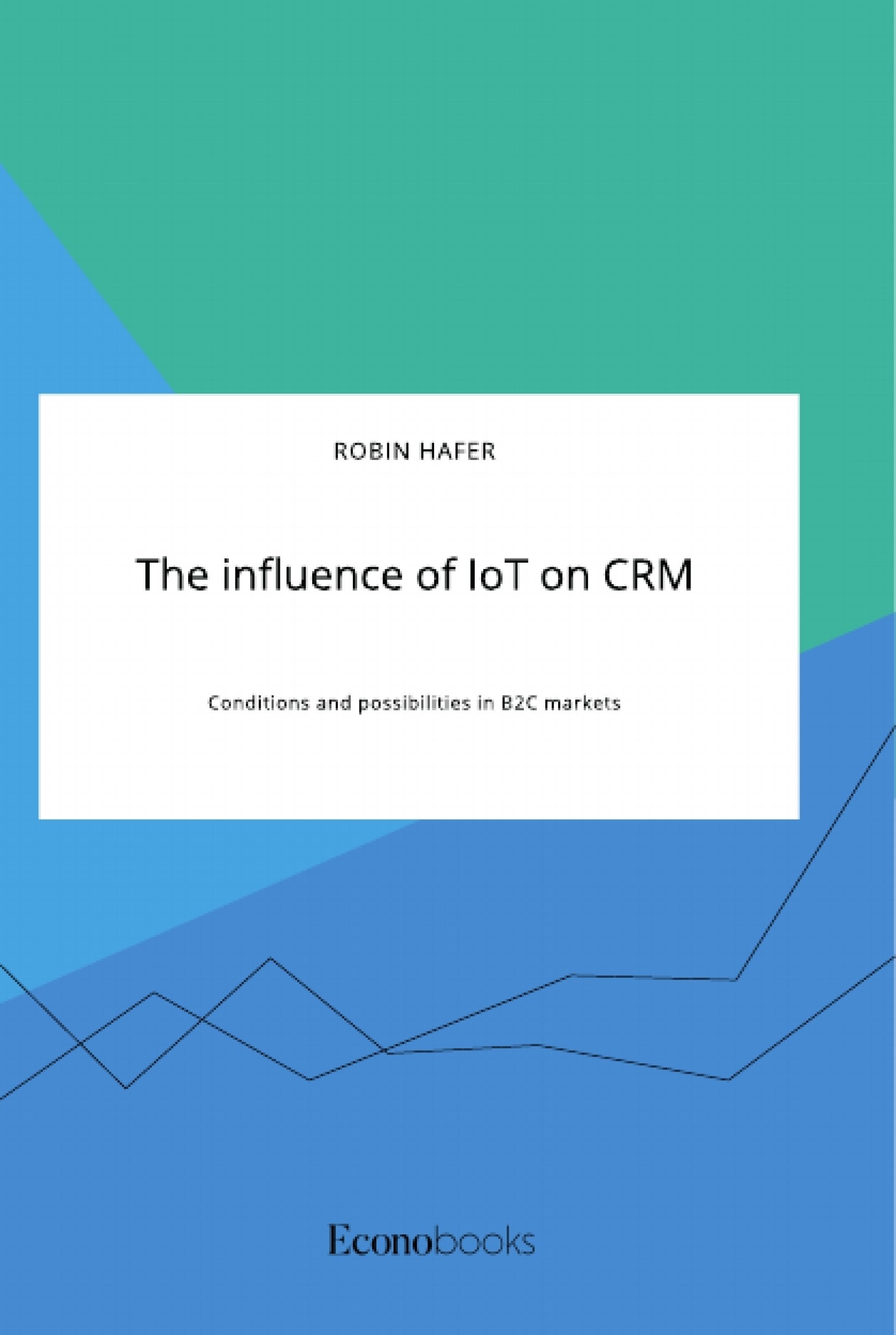The digitalisation pictures the most incisively change in human lives after the industrialisation. It enables the rapid transfer of complex information content necessary for the conduct of business and private transactions. Especially the interconnectivity between objectives, the "Internet Of Things" (IoT), has a massive impact on how people use digital products. It determines the direction of communication between companies and their (potential) customers.
What is the status quo of IoT? How can it be used in Customer-Relationship-Management (CRM)? The author of the book at hand offers answers to those questions and explains how IoT can be used properly by companies to unfold its potential. He shows how the combination of IoT and CRM can lead to a bright future for the B2C market.
- Internet of Things;
- Customer Relationship Management;
- Customer Decision Journey;
- Return in Investment;
- Marketing;
- Customer Lifetime Value;
Inhaltsverzeichnis (Table of Contents)
- 1 Introduction
- 1.1 Purpose of the Thesis
- 1.2 Procedure and Research
- 2 Selected theoretical Aspects of the Internet of Things and Customer Relationship Management
- 2.1 Basic Principles of the Internet of Things
- 2.2 Basic Principles of Customer Relationship Management
- 3 Study of the Influence of the Internet of Things on Customer Relationship Management
- 3.1 Status Quo of Technology and its Dissemination
- 3.2 Presentation of relevant research results on the Internet of Things in Customer Relationship Management
- 3.3 Presentation and Analysis of first Implementation Attempts
- 3.4 Effects on strategic Customer Retention through the Internet of Things
- 4 Conclusion
Zielsetzung und Themenschwerpunkte (Objectives and Key Themes)
This thesis examines the influence of the Internet of Things (IoT) on Customer Relationship Management (CRM) in B2C markets. It aims to analyze the impact of IoT technologies on customer interactions, data collection, and strategic customer retention. The study explores the current state of IoT implementation in CRM, examines relevant research findings, and analyzes real-world examples of implementation attempts. The thesis concludes by exploring the effects of IoT on strategic customer retention within the context of B2C markets.
- The influence of IoT on customer interactions and data collection.
- The impact of IoT technologies on strategic customer retention.
- The challenges and opportunities associated with implementing IoT in CRM.
- The potential benefits of using IoT for enhancing customer experience and loyalty.
- The ethical considerations surrounding data privacy and security in the context of IoT-enabled CRM.
Zusammenfassung der Kapitel (Chapter Summaries)
The first chapter introduces the purpose of the thesis and outlines the research methodology. The second chapter provides a theoretical foundation by discussing the basic principles of the Internet of Things and Customer Relationship Management. The third chapter delves into the influence of the Internet of Things on Customer Relationship Management. It examines the current state of IoT implementation in CRM, presents relevant research findings, and analyzes real-world examples of implementation attempts.
Schlüsselwörter (Keywords)
The key focus areas of the thesis are the Internet of Things (IoT), Customer Relationship Management (CRM), B2C markets, customer interactions, data collection, strategic customer retention, data privacy, and ethical considerations. The study explores the current state of IoT implementation in CRM, examines relevant research findings, and analyzes real-world examples of implementation attempts. The thesis also discusses the potential benefits of using IoT for enhancing customer experience and loyalty.
- Citar trabajo
- Robin Hafer (Autor), 2020, The influence of IoT on CRM. Conditions and possibilities in B2C markets, Múnich, GRIN Verlag, https://www.grin.com/document/504359



